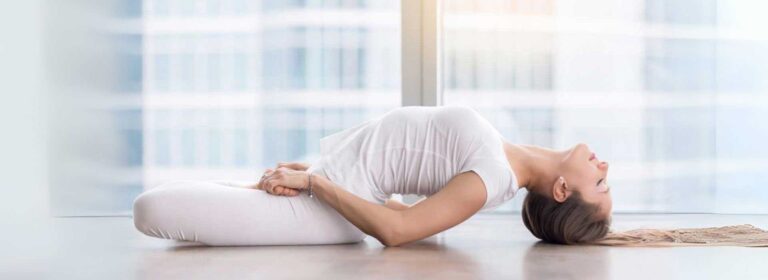Yoga Practice Name
Matsyasana


Matsyasana
Fish Pose
Description:
Matsyasana, or Fish Pose, is a backbend that stretches the chest, throat, and hip flexors while strengthening the muscles of the back. It is often practiced as a counter-pose to forward bends, opening the heart and throat area.
Steps of Practice:
1.Setu Bandhasana, 2.Bhujangasana, 3.Ustrasana, 4.Dhanurasana, 5.Supta Baddha Konasana, 6.Salamba Sirsasana
GS: 2.21 / HYP: 1.27